North Atlantic and Indian Ocean links with Iraq Climate
Abstract
:1. Introduction
- The SLP patterns linked to Iraq temperature and precipitation are identified through Canonical Correlation Analysis (CCA);
- The physical mechanisms connecting these patterns with Iraq climate are inferred through regression maps.
2. The Geography and Climate of Iraq
3. Data and Methodology
3.1. Data
3.2. Methods
4. Results
4.1. Link between the North Atlantic Region and Iraq Winter Temperature
4.2. Physical Processes Connecting the North Atlantic Sector with Iraq Winter Temperature
4.3. Link between the North Atlantic Sector and Iraq Winter Precipitation
4.4. Physical Processes Connecting the North Atlantic Sector with Iraq Winter Precipitation
4.5. Link between the Indian Ocean Sector and Iraq Winter Temperatures
4.6. Physical Mechanisms Associated with the Iraq Winter Temperature
4.7. Link between the Indian Ocean Sector and Iraq Summer Temperature
4.8. Physical Mechanisms Associated to Iraq Summer Temperature
5. Discussion
6. Conclusions
Acknowledgments
Author Contributions
Conflicts of Interest
References
- Hurrell, J.W. Decadal trends in the North Atlantic Oscillation: Regional temperatures and precipitation. Sci. New Ser. 1995, 269, 676–679. [Google Scholar] [CrossRef] [PubMed]
- Scaife, A.A.; Folland, C.K.; Alexander, L.V.; Moberg, A.; Knight, J.R. European climate extremes and the North Atlantic Oscillation. J. Clim. Am. Meteorol. Soc. 2008, 21, 72–83. [Google Scholar] [CrossRef]
- Dima, M.; Rimbu, N.; Stefan, S.; Dima, I. Quasi-Decadal Variability in the Atlantic Basin Involving Tropics-Midlatitudes and Ocean-Atmosphere Interactions. J. Clim. 2001, 14, 823–832. [Google Scholar] [CrossRef]
- Muñoz, D.; Rodrigo, F.S. Impacts of the North Atlantic Oscillation on the probability of dry and wet winters in Spain. Clim. Res. 2004, 4, 33–43. [Google Scholar] [CrossRef]
- Khidher, S.A.; Pilesjö, P. The effect of the North Atlantic Oscillation on the Iraqi climate 1982–2000. Theor. Appl. Climatol. 2015, 122, 771. [Google Scholar] [CrossRef]
- Kahya, E. The Impacts of NAO on the Hydrology of the Eastern Mediterranean (Chapter 4). Adv. Glob. Chang. Res. 2011, 46, 51–71. [Google Scholar]
- Masih, I.; Uhlenbrook, S.; Maskey, S.; Smakhtin, V. Streamflow trends and climate linkages in the Zagros Mountains, Iran. Clim. Chang. 2010, 104, 317–338. [Google Scholar] [CrossRef]
- Marcella, M.P.; Eltahir, E. The hydroclimatology of Kuwait: Explaining the variability of rainfall at seasonal and interannual time scales. J. Hydrometeorol. 2008, 9, 1095–1105. [Google Scholar] [CrossRef]
- Mann, M.E. Large-scale climate variability and connections with the middle-east in the past Centuries. Clim. Chang. 2002, 55, 278–314. [Google Scholar] [CrossRef]
- Cullen, H.M.; Demenocal, P. North Atlantic influence on Tigris-Euphrates streamflow. Int. J. Climatol. 2000, 55, 853–863. [Google Scholar] [CrossRef]
- Alkhalidi, J.; Dima, M.; Stefan, S. Large-scale modes impact on Iraq climate variability. Theor. Appl. Climatol. 2017, 129, 1–12. [Google Scholar] [CrossRef]
- Kampf, J.; Sadrinasab, M. The circulation of the Persian Gulf: A numerical study. Ocean Sci. 2006, 2, 27–41. [Google Scholar] [CrossRef]
- Almazroui, M.A.; Al Khalaf, A.K.; Abdel Basset, H.M.; Hasanean, H.M. Detecting Climate Change Signals in Saudi Arabia Using Surface Temperature; Project Number (305/428); King Abdelaziz University: Kingdom of Saudi Arabia, 2009. [Google Scholar]
- Nasrallah, H.A.; Nieplova, E.; Ramadan, E. Warm season extreme temperature events in Kuwait. J. Arid Environ. 2004, 56, 357–371. [Google Scholar] [CrossRef]
- Kutiel, H.; Hirsch, T.R.; Turkes, M. Sea level pressure patterns associated with dry or wet monthly rainfall conditions in Turkey. Theor. Appl. Climatol. 2001, 69, 39–67. [Google Scholar] [CrossRef]
- Kutiel, H.; Paz, S. Sea Level Pressure Departures in the Mediterranean and their Relationship with Monthly Rainfall Conditions in Israel. Theor. Appl. Climatol. 1998, 60, 93–109. [Google Scholar] [CrossRef]
- Barnston, A.G.; Livezey, R.E. Classification, seasonality and persistence of low-frequency atmospheric circulation patterns. Mon. Weather Rev. 1987, 115, 1083–1126. [Google Scholar] [CrossRef]
- CPC. Northern Hemisphere Teleconnection Patterns. 2005. Available online: www.cpc.noaa.gov/data/teleconents.shtml (accessed on 1 March 2017).
- Zhang, J. January 2001—Low temperature in the northeastern China and heavy snowstorm over Inner Mongolia and Xinjiang. Mon. Meteorol. 2001, 27, 62–63. (In Chinese) [Google Scholar]
- Ohhashi, Y.; Yamazaki, K. Variability of the Eurasian pattern and its interpretation by wave activity flux. J. Meteorol. Soc. Jpn. 1999, 77, 495–511. [Google Scholar] [CrossRef]
- Bueh, C.; Nakamura, H. Scandinavian pattern and its climatic impact. Q. J. R. Meteorol. Soc. 2007, 133, 2117–2131. [Google Scholar] [CrossRef]
- Frenken, K. Irrigation in the Middle East Region in Figures—AQUASTAT Survey 2008; FAO: Rome, Italy, 2009. [Google Scholar]
- Khamis, M.D. Identifying the climatic conditions in Iraq by tracking down cooling events in the North Atlantic Ocean in the period 3000–BC. Misc. Geogr. 2014, 18, 40–46. [Google Scholar]
- Khidher, S.A. Climate History of Iraq, Past and Present; (Book in Arabic); Baghdad University Press: Baghdad, Iraq, 2013. [Google Scholar]
- Dee, D.P.; Uppala, S.M.; Simmons, A.J. The ERA-Interim reanalysis: Configuration and performance of the data assimilation system. Q. J. R. Meteorol. Soc. 2011, 137, 553–597. [Google Scholar] [CrossRef]
- Willmott, C.J.; Matsuura, K. Terrestrial Air Temperature and Precipitation: Monthly and Annual Time Series (1950–1999). 2001. Available online: https://www.esrl.noaa.gov/psd/data (accessed on 1 April 2017).
- Wilks, D.S. Statistical Methods in the Atmospheric Sciences, 3rd ed.; Academic Press: Oxford, UK, 2011; Volume 100. [Google Scholar]
- Marzban, C.; Sandgathe, S.; Doyle, J.D. Model Tuning with Canonical Correlation Analysis. Mon. Weather Rev. 2014, 142, 2018–2027. [Google Scholar] [CrossRef]
- Alpert, P.; Ziv, B. The Sharav cyclone: Observations and some theoretical considerations. J. Geophys. Res. 1989, 94, 18495–18514. [Google Scholar] [CrossRef]
- Trigo, I.F.; Davis, T.D.; Bigg, G.R. Decline in Mediterranean rainfall caused by weakening of Mediterranean cyclones. Geophys. Res. Lett. 2000, 27, 2913–2916. [Google Scholar] [CrossRef]
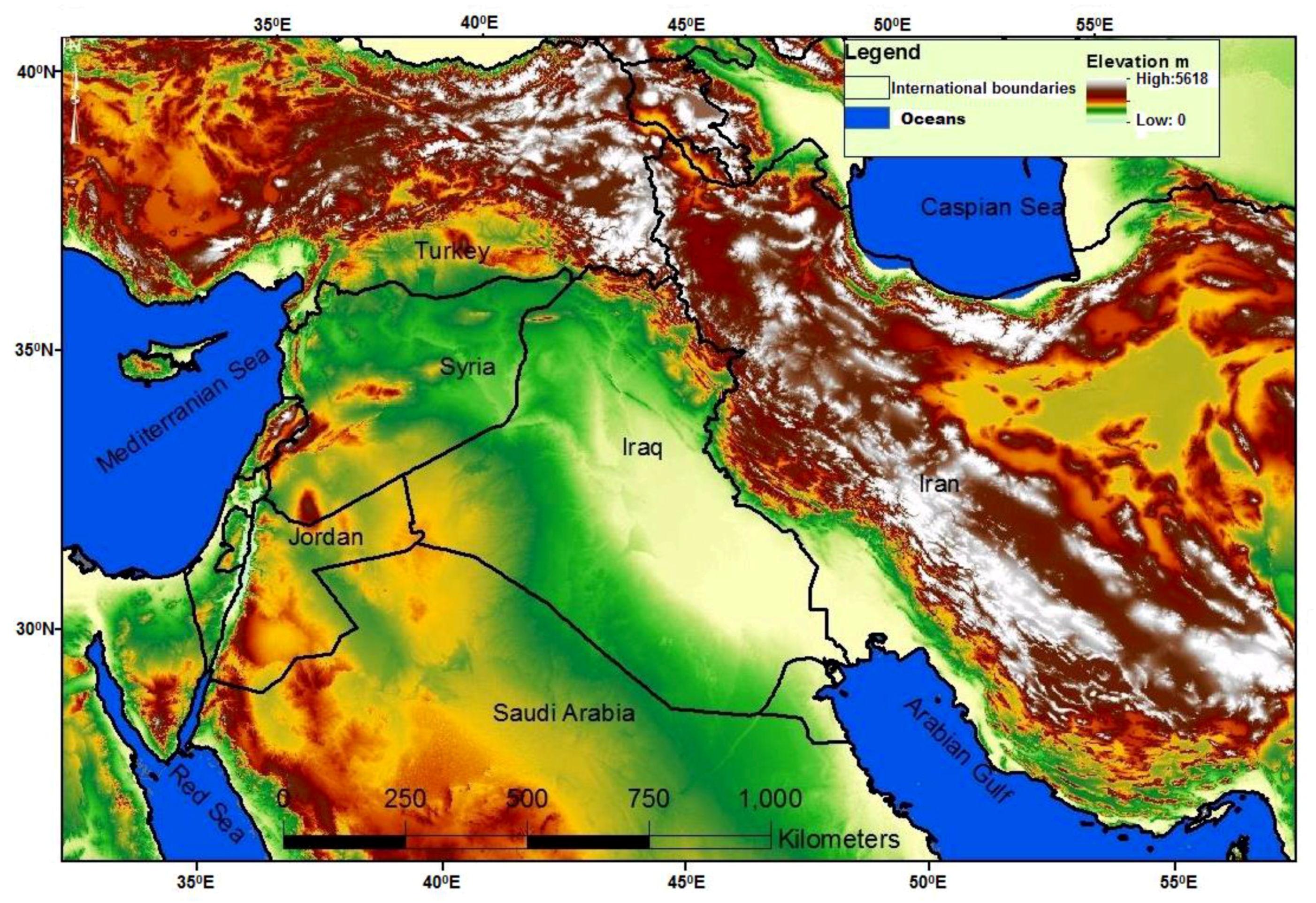
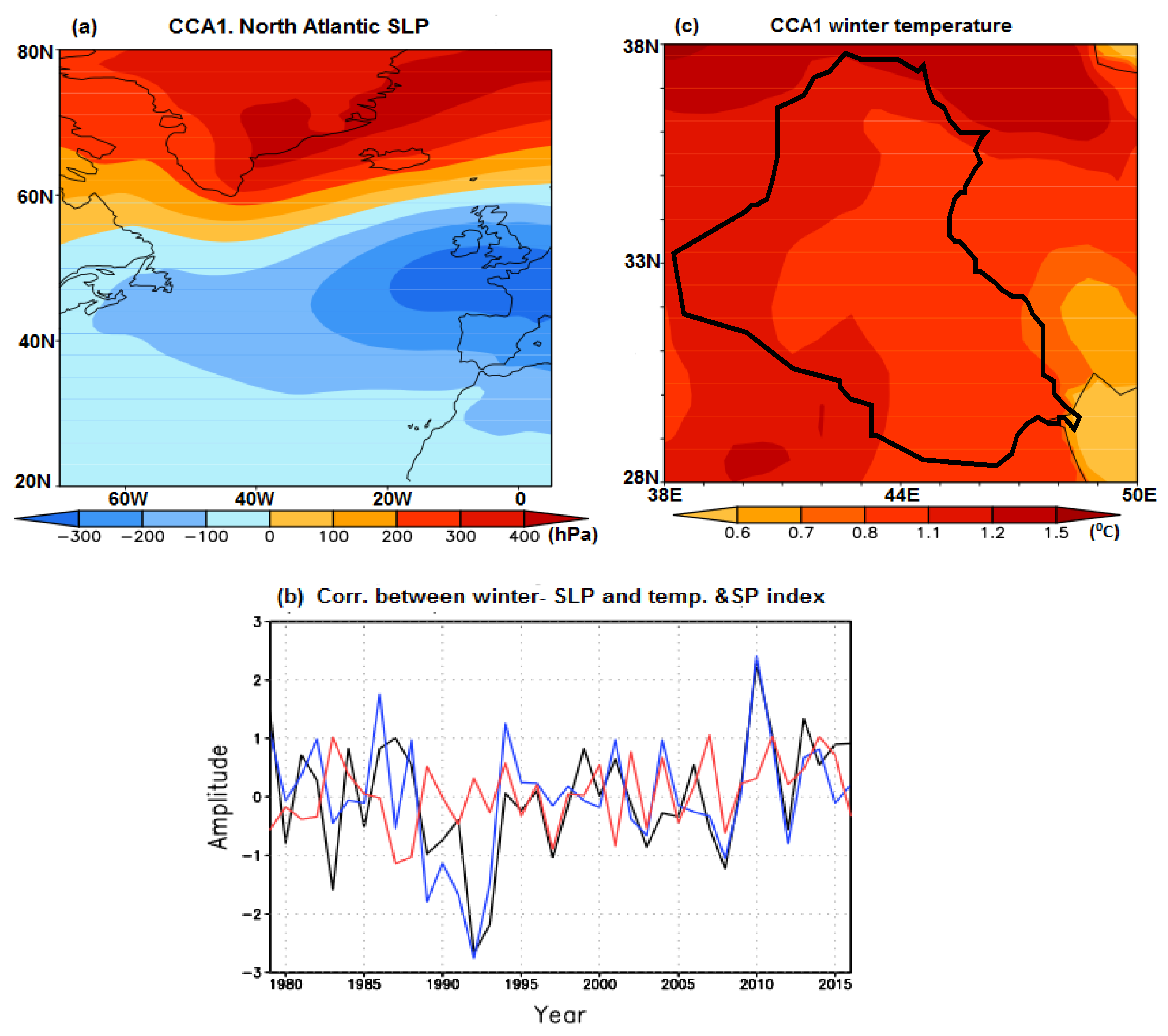
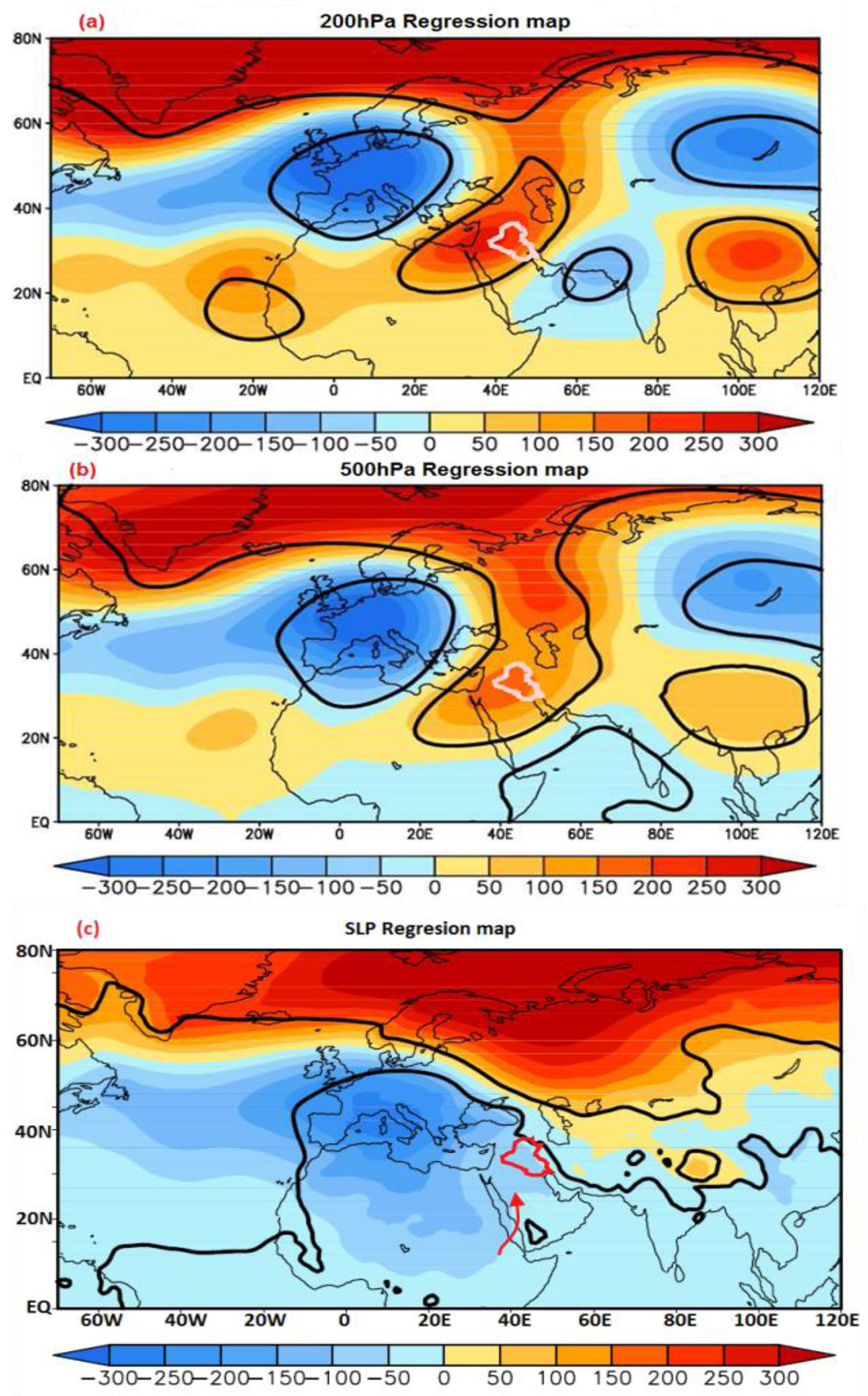

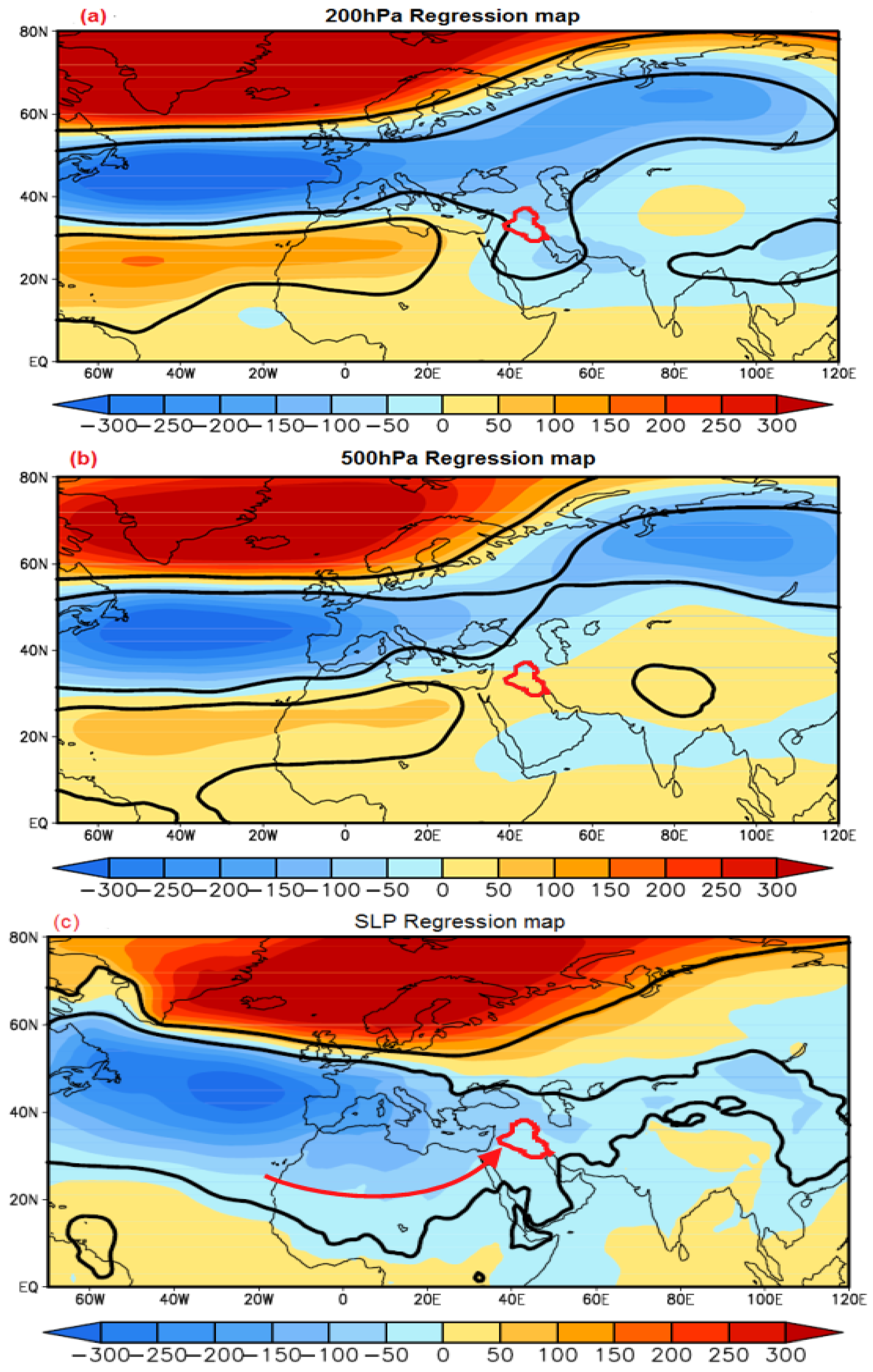
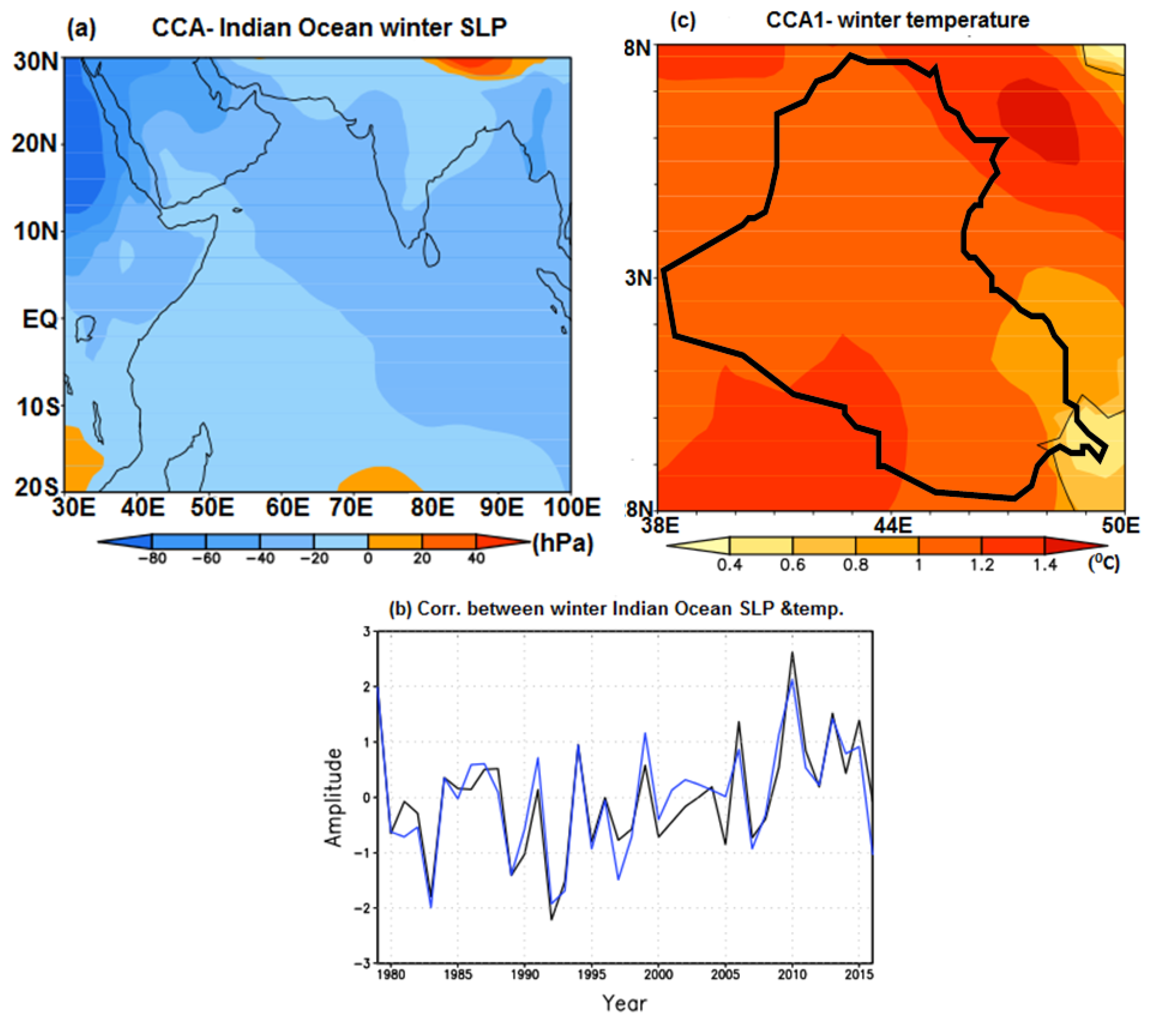
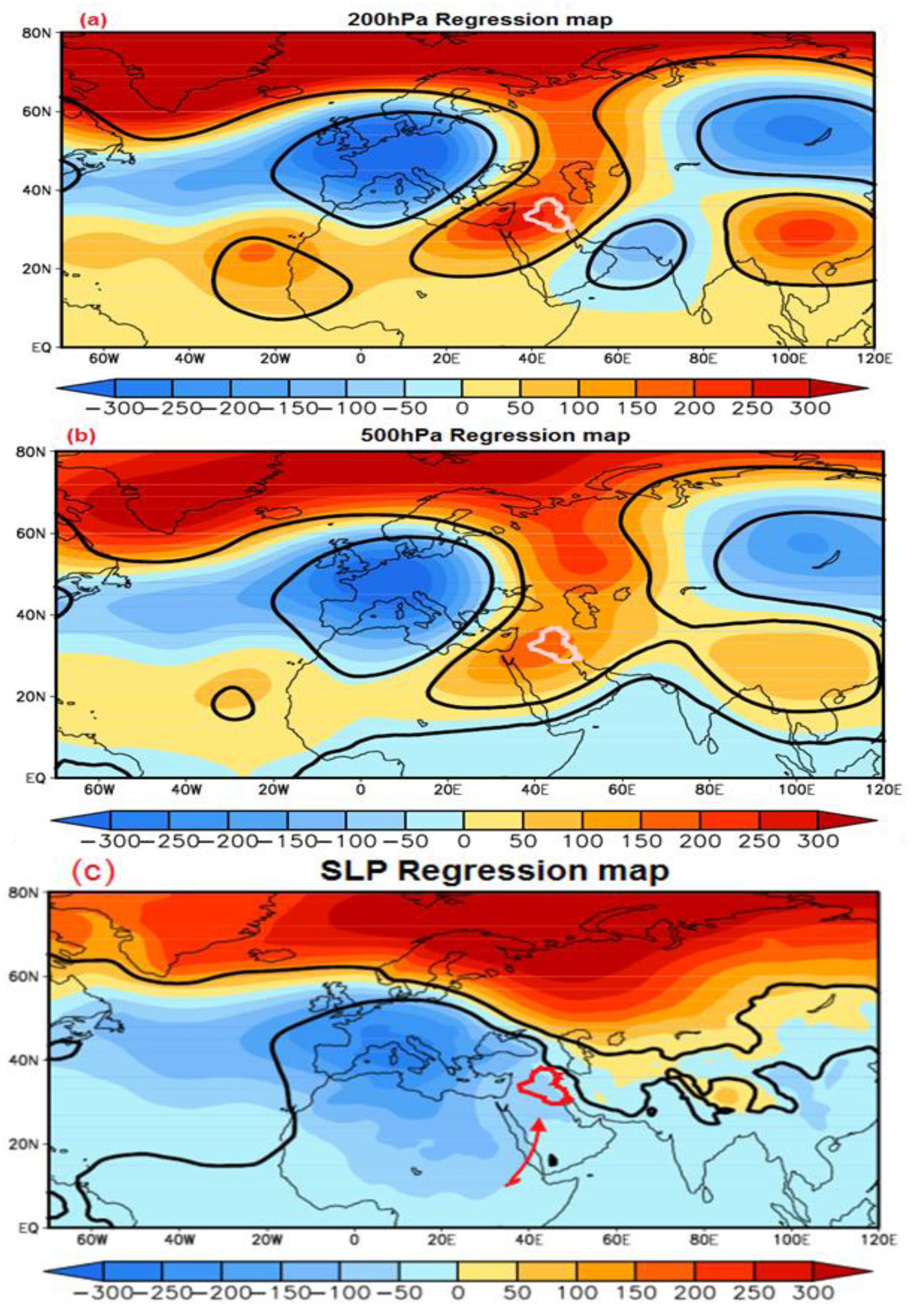
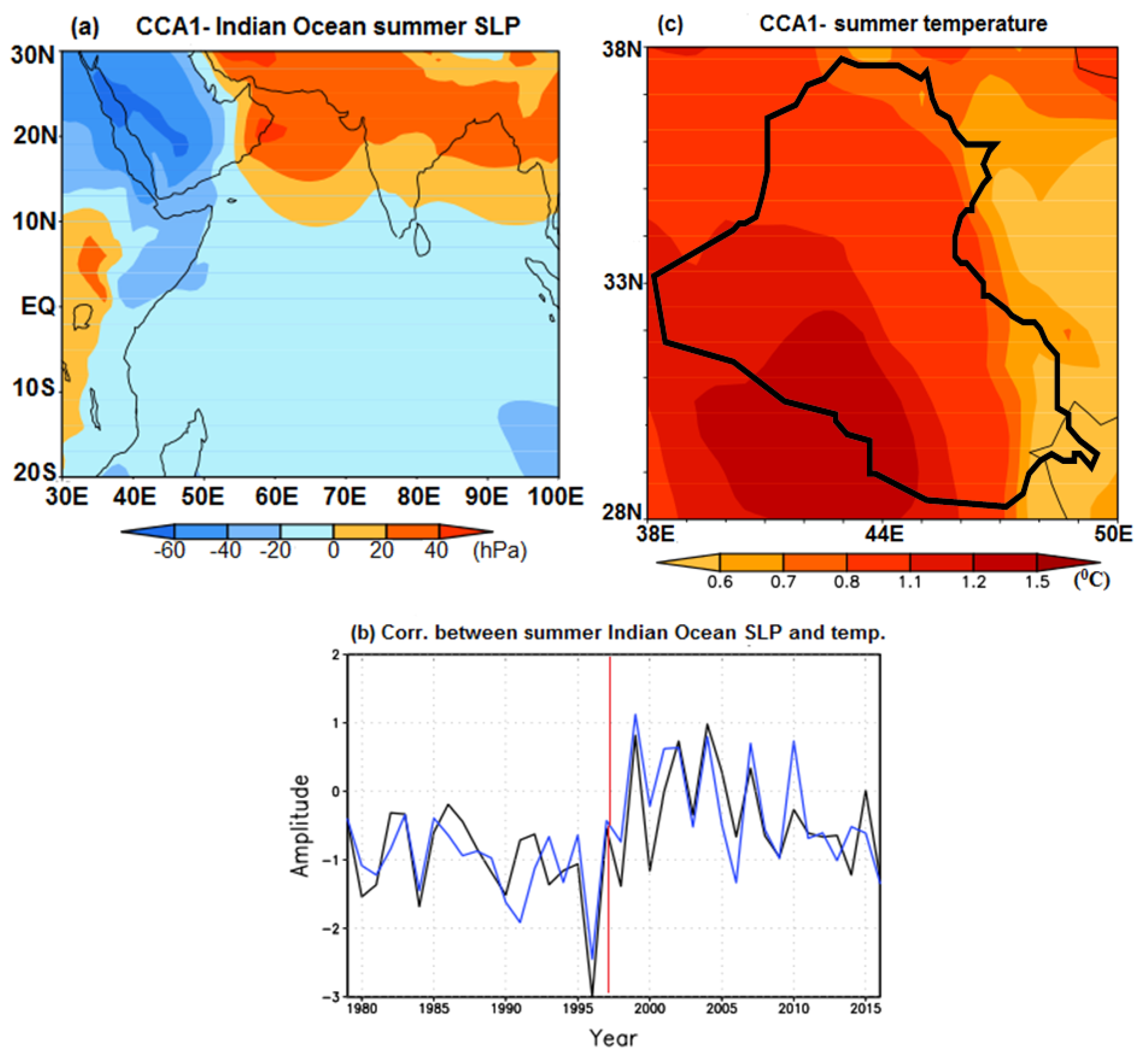
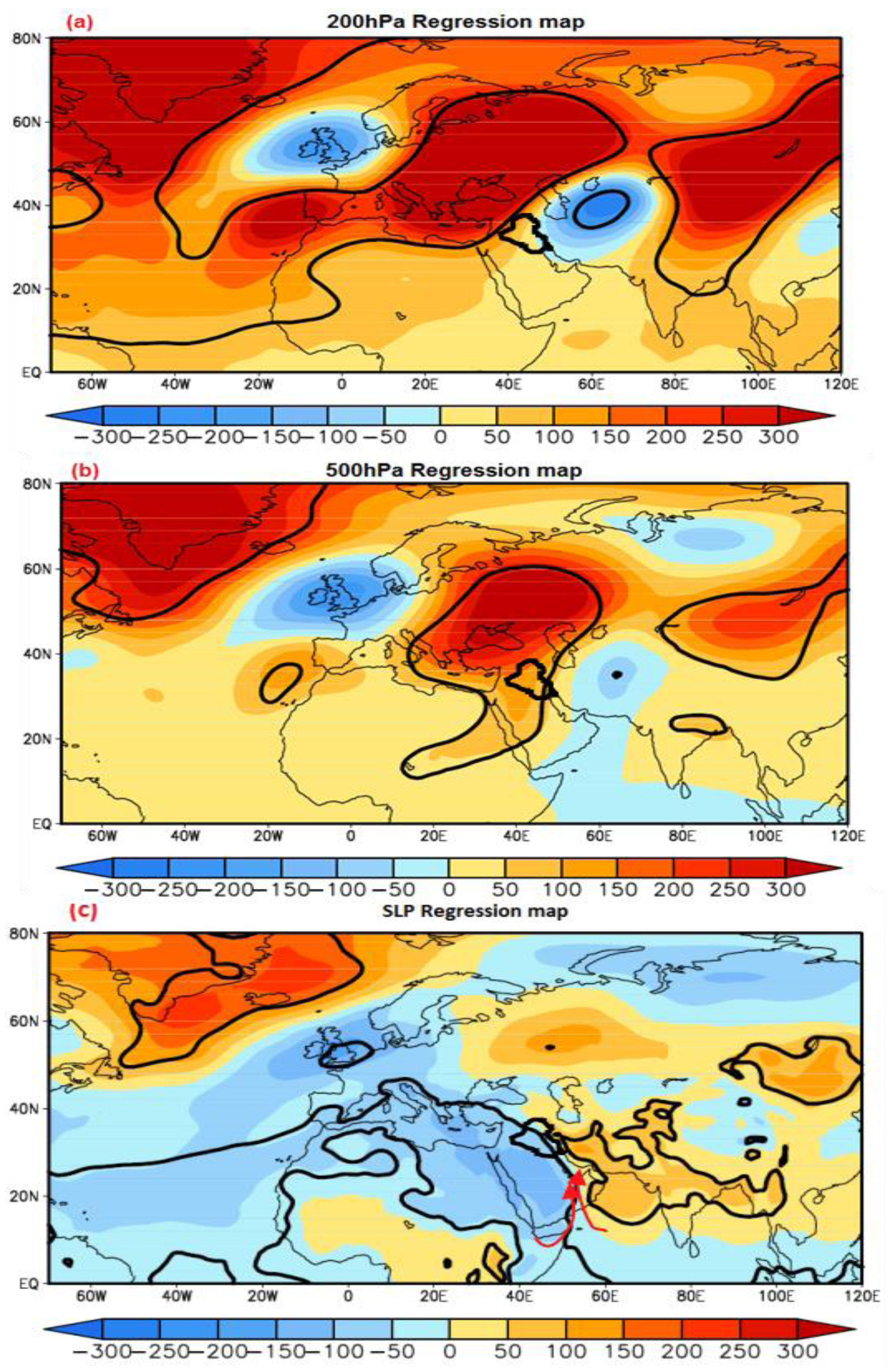
© 2017 by the authors. Licensee MDPI, Basel, Switzerland. This article is an open access article distributed under the terms and conditions of the Creative Commons Attribution (CC BY) license (http://creativecommons.org/licenses/by/4.0/).
Share and Cite
Al-Khalidi, J.; Dima, M.; Vaideanu, P.; Stefan, S. North Atlantic and Indian Ocean links with Iraq Climate. Atmosphere 2017, 8, 235. https://doi.org/10.3390/atmos8120235
Al-Khalidi J, Dima M, Vaideanu P, Stefan S. North Atlantic and Indian Ocean links with Iraq Climate. Atmosphere. 2017; 8(12):235. https://doi.org/10.3390/atmos8120235
Chicago/Turabian StyleAl-Khalidi, Jasim, Mihai Dima, Petru Vaideanu, and Sabina Stefan. 2017. "North Atlantic and Indian Ocean links with Iraq Climate" Atmosphere 8, no. 12: 235. https://doi.org/10.3390/atmos8120235



